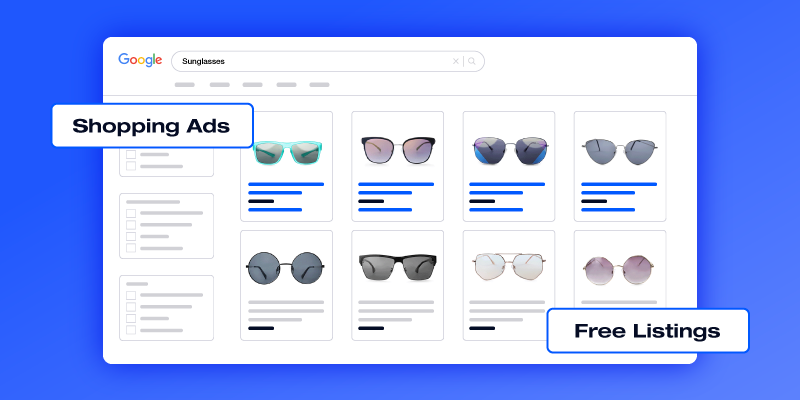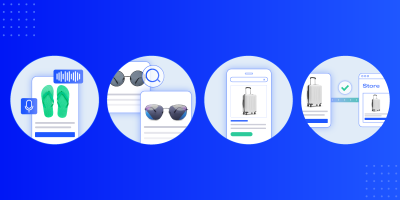In 2020, the Google Shopping free listing program was a game changer for ecommerce merchants because it gave them a free way to increase the discoverability of their products. The original program allowed merchants to list products in the Google Shopping tab and on Google Search for free, but has recently expanded to far more places across Google’s network.
Free listings on Google Shopping are a cost-effective way to reach more customers organically. Here’s everything you should know about the program, how to get started, and how to get the most out of your listings.
How do free listings work?
Just as websites do not have to pay to appear in Google’s search index, merchants can have their product information organically displayed to users across Google’s channels for free. It is important to note that this program does not guarantee that your product listings will appear on Google’s network; the program relies heavily on the quality of your product data and what customers are searching for.
Where do Google’s free listings appear?
The free listing program promotes your products on Google’s Shopping tab, Google Images, Google Search, and YouTube. This means if you have a Google Merchant Center (GMC) product feed, Google can display those products organically to users on all of these platforms.
Shopping tab
The Shopping tab used to be solely for sponsored product ads and commission-based marketplace listings. Now your products can appear on the Shopping tab organically and free of charge, ranked by their search relevancy.
The top row on the page is reserved for Shopping ads, and free listings appear below. If you have also opted into Google’s free local product listings program, your listing may appear to local customers with store information like directions, store hours, product availability, etc.

Google Images
When users search for products and brands in Google Images, product listings can potentially appear at the top of the page with a “product” label that looks like a shopping tag. This label means that the product is available for purchase. When the customer clicks on the image, product listing information appears beneath it. In addition, Google Lens, a feature within Google Images, allows users to visually search for products. Free listings and rich product snippets can appear here as well.
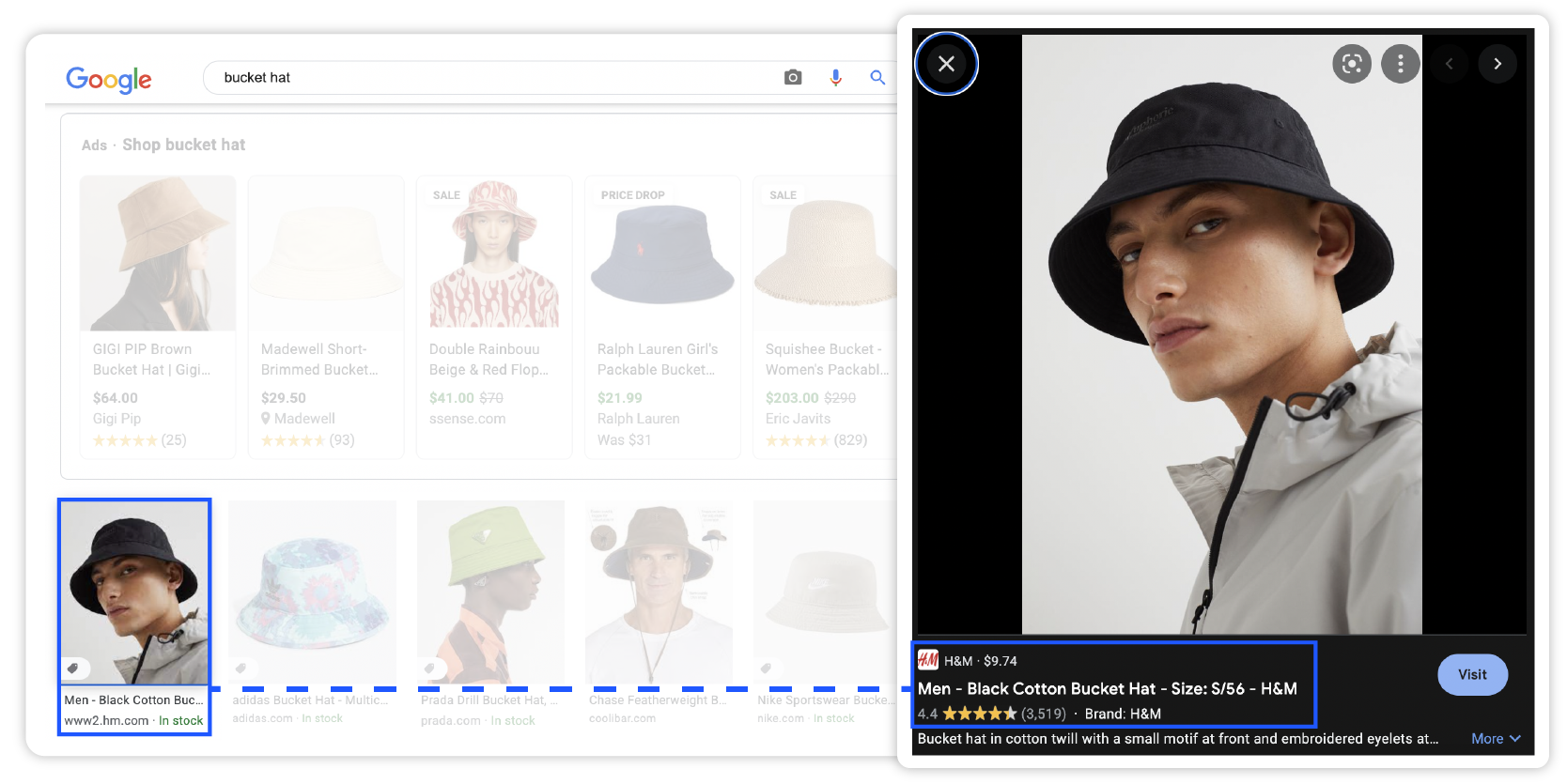
Google Search
When customers use Google Search, there are a few ways that Google displays your free listings. Rich results for related products can appear alongside standard search results. These results provide the user with a little more information, like pricing, availability, and ratings.
The Popular Products section, only available on mobile in the United States, is reserved for popular products in the apparel & accessories category. These products are eligible to be shown as a product list carousel if your product data matches the user’s query.
The Shopping Knowledge Panel is another search section that organizes information for a specific product. This panel spotlights an item and provides details from retailers who sell it. If your product data includes the item being searched for, your listing is eligible to appear here. To ensure your products appear correctly in the Shopping Knowledge Panel, you should provide strong product identifiers (GTIN, MPN + brand).
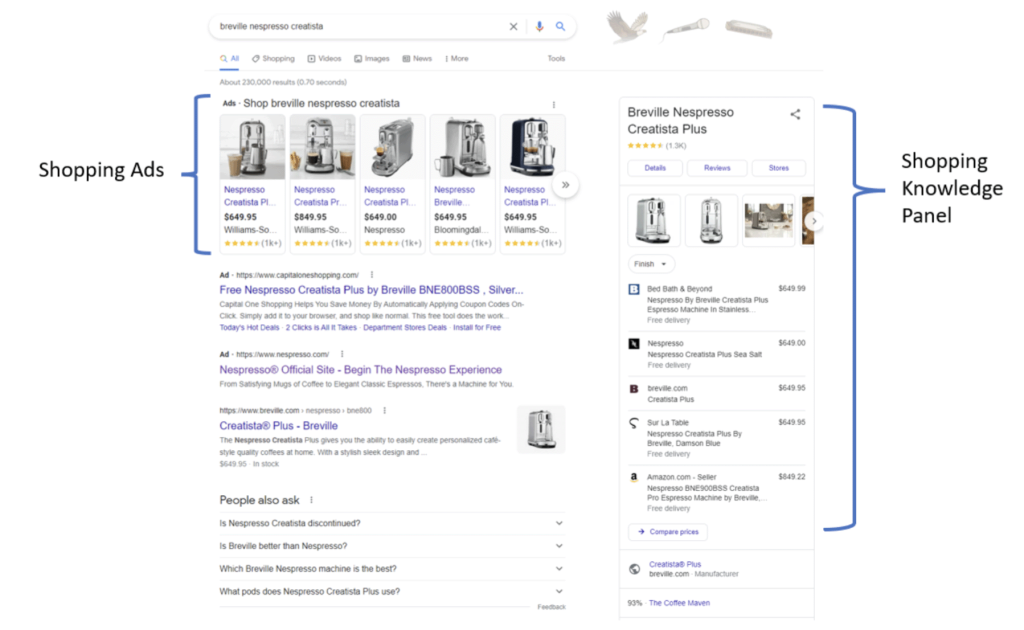
YouTube
Free listings appear on YouTube beneath a related video or in the results when searching for a matching product. If your product data includes relevant search terms, users can come across your products while browsing.
How do merchants get started with free listings?
The first step is to log in to your GMC account. If you do not have one, follow these steps to create one. Once your account is created, follow the setup flow to opt into free listings. If you already have an account, you can opt in by selecting “growth” in the left sidebar navigation and clicking “manage programs.” From there, click “get started” below free product listings and complete all the steps that apply to you.
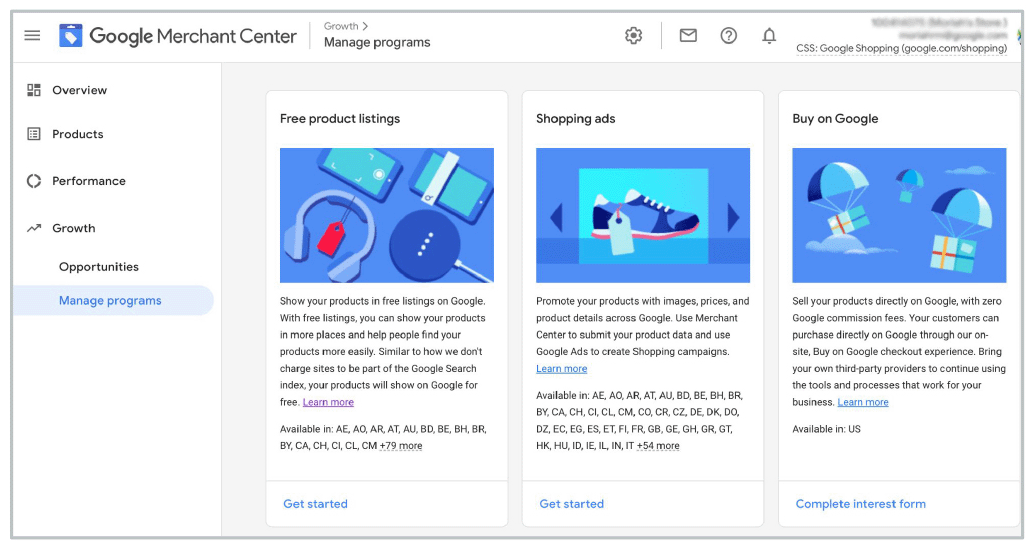
Free Listing Eligibility
To remain eligible for free listings, you must meet the following requirements:
- Adhere to Google’s policies for showing products in free listings
- Adhere to Google’s shopping ads policies
- Display your company’s return policy on your website and include it in your Merchant Center Account
- Include a link to your shipping policy in your Merchant Center Account
Required Product Attributes
Your product feed must also include these attributes to participate in free listings:
- ID: The internal stock identifier for your product
- Title: The name of your product
- Link: Your product’s landing page
- Image link: The primary image of your product
- Price: The standard price of the item
- Description: A specific and accurate description of your product
- Availability: The availability of your product
- Condition: Only required if your product is used or refurbished
- Brand: Only required if the item is associated with a brand or manufacturer
- GTIN: Only required if your product is widely manufactured and has a GTIN
- MPN: Only required if your product does not have a GTIN
- Multipack: Indicates whether your product is multiples grouped as a single product
- Bundle: Required if your product is a bundle
- Item group ID: Required for product variants
- Shipping: Required for all products to define shipping costs
- Tax: Only required if you need to override your account tax settings in GMC
For products listed within the apparel & accessories category, Google requires/recommends these additional attributes:
- Color: The primary color of your product (required)
- Size: The standardized size of your product (required)
- Age group: The primary age demographic for your product (required)
- Gender: The gender your product is for; you can submit “unisex” if no gender is specified (required)
- Pattern: A description of the pattern or graphic print on your product (recommended)
- Material: The primary material used to make your product (recommended)
Google product feed data requirements making your head spin? Let our feed specialists help!
How do you get the most out of Google’s free listings?
To maximize the performance of your free product listings, it is important to keep your account information up-to-date and provide high-quality data in your product feeds. Google recommends the following tips to ensure users have a positive shopping experience:
- Follow Google’s SEO guide to improve your website’s visibility in search
- Match your product data in GMC with the product information listed on your website
- Opt into Google Customer Reviews to improve your eligibility for seller ratings
- If applicable, link your Merchant Center Account with your Google Business Profile
- If applicable, link your Merchant Center Account to the third-party platform you also sell on
How can merchants see the metrics for unpaid clicks from the free listings program?
Google recently added the auto-tagging feature to track the effectiveness of your free listings and free local listings. Once you’ve linked a web analytics tool to Merchant Center, auto-tagging allows you to easily track conversions specifically from your free listings. Auto-tagging used to only be designated for listings on the Shopping tab, but with this expansion, you can now view how your free listings perform on all the eligible surfaces across the Google network.
Getting started auto-tagging is simple. Upon signing into your GMC account, click the “tools” icon, then conversion settings under “settings”. From here, toggle the “auto-tagging” setting to “on”.
Additionally, in GMC, you can go to performance > dashboard to see some basic metrics for free listings traffic (once you link your Google Analytics account). If you’re interested in other ways to track the performance of your free listings, head over to our blog on how to track organic traffic from Google Shopping in Google Analytics.
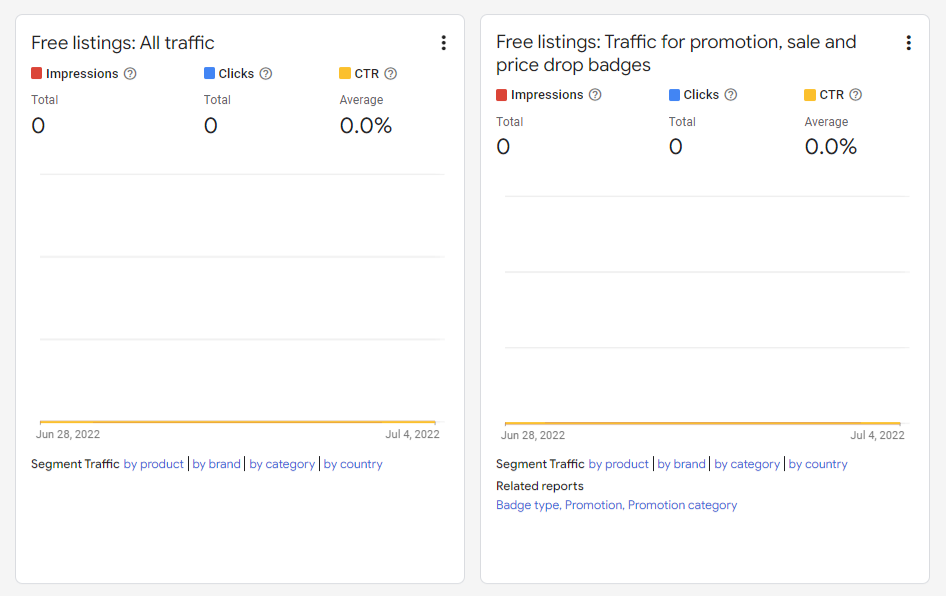
What does this mean for paid Google Shopping ads?
Overall, it’s good news for merchants who can’t afford to use ad spend on lower-margin products. Now they have the opportunity to drive free traffic to their website. Free listings can also supercharge paid ad campaigns. Google found that merchants who use free listings and ads together increased clicks by 50% and doubled impressions. Merchants have the opportunity to dominate search results at the bottom of the sales funnel with organic product listings appearing beside targeted paid ads.
How can this promote your online store?
With free listings, your products’ impressions—paid or organic—can increase. One reason Google expanded this program was to increase the selection of products its search algorithm can surface. Google’s overall intent is to provide a better shopping experience for consumers, which should help it reclaim some territory lost to Amazon for product searches. In a nutshell, if all goes according to plan, then more merchants will have products shown on Google’s network, more customers will find value in it, and sellers will reach a wider audience.
To remain competitive, or to capitalize on this new opportunity, you want to make sure you have optimized product data. The quality of your product data determines how your products fare among the organic listings. Connect with our team of Google product feed experts to ensure your data is optimized to reach your ecommerce goals.
Find out why the world’s most prolific brands and online retailers choose Feedonomics.

Brian Roizen is the Cofounder and Chief Architect of Feedonomics, a full-service feed optimization platform that optimizes product data for hundreds of channels. He has been featured on numerous podcasts and eCommerce webinars, and regularly contributes to Search Engine Land and other industry-leading blogs. Brian graduated summa cum laude from UCLA with both a Bachelor’s and Master’s degree in Mechanical Engineering.

